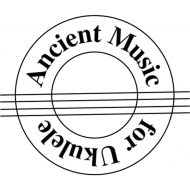Selection of Music for this Book
All the pieces in this book were written for the Renaissance guitar and were included in 9 surviving books published by Adrian Le Roy and Guillaume Morlaye:
Premier livre de tabulature de guiterre (1551) — Cinquiesme livre de guiterre en tabulature (1554)
Premier livre en tabulature de guiterne (1552) — Quatriesme livre en tabulature de guiterne (1552)
Some of the pieces have already been arranged and included in the following books from Ancient Music for Ukulele:
- Favourites of Le Roy on the Ukulele (Books 1 and 2)
- Favourites of Morlaye on the Ukulele (Books 1 and 2)
Notes on the Composers and Pieces
All sources are Wikipedia.
The gaillarde or galliard was a form of Renaissance dance and music popular all over Europe in the 16th century. It is mentioned in dance manuals from England, France, Spain, Germany, and Italy. It is an athletic dance, characterised by leaps, jumps, hops and other similar figures in a series of choreographed patterns of steps. After the dance fell out of popular use and, in musical compositions, the galliard often filled the role of an after dance written in 3 or 6, which followed and mimicked another piece (sometimes a pavane) written in 2 or 4.
NOTE: When the pieces in the original books do not have a secondary name, they have been assigned numbering for convenience (e.g. I, II, III, …). Where there are gaps in the numbering, the pieces are in in another book of arrangements from Ancient Music for Ukulele.
Adrian Le Roy (c.1520–1598) became an accomplished musician and entered the service of, first, Claude de Clermont, then, Jacques II (Baron de Semblançay and Viscount of Tours), both members of the aristocracy who had influence at court. Le Roy and his cousin Robert Ballard founded the printing firm “Le Roy & Ballard”, and in August 1551 obtained a royal privilege from Henry II to print music. Royal patronage was a major factor in the company’s success since it ensured both a ready supply of new music from the court musicians and a market for its publications. Over the following two decades other rival companies dropped out of the market and from the 1570s onwards Le Roy & Ballard enjoyed a virtual monopoly in music publishing. Le Roy achieved renown as a composer and arranger of songs and instrumentals, his published work including at least six books of tablature for the lute, five volumes for the guitar and arrangements for the cittern. Le Roy’s book L’Instruction pour la mandore gives modern historians hints as to the instrument’s origins and design.
Guillaume Morlaye (ca 1510 – 1558) was a French Renaissance era lutenist, composer and music publisher. He was a pupil of Albert de Rippe and lived and worked in Paris. In 1552 he received a ten-year license to publish music from Henry II, and between 1553 and 1558 published four lute collections in cooperation with Michel Fezandat and six lute collections compiled by Albert de Rippe. He also published three books of his own four-course Renaissance guitar compositions during 1552–53, including fantasies and dances, and also lute arrangements of Pierre Certon and Claudin de Sermisy. Besides his music publishing activities, Morlaye was reported to have engaged in the slave trade, although reliable evidence for this is scant.
